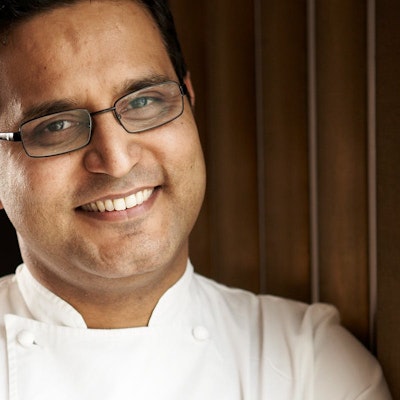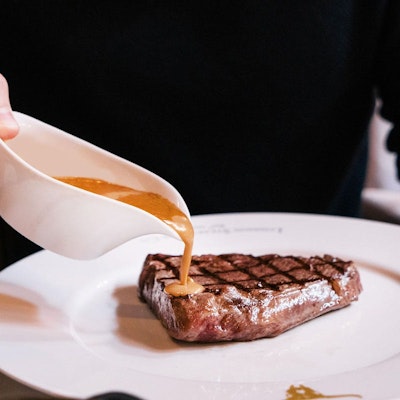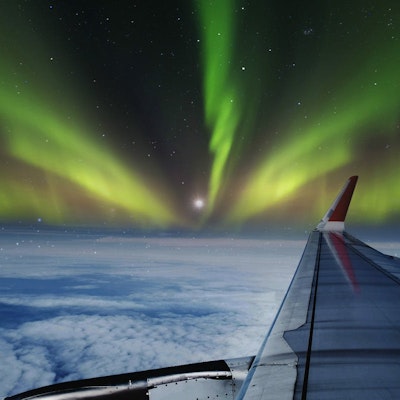Firstly, and probably most importantly, choose your meat carefully. We prefer British and grass fed – feeding on grass provides more flavour and great texture.
It should have been reared on hilly ground in the North West or South West of England or the North East of Scotland.
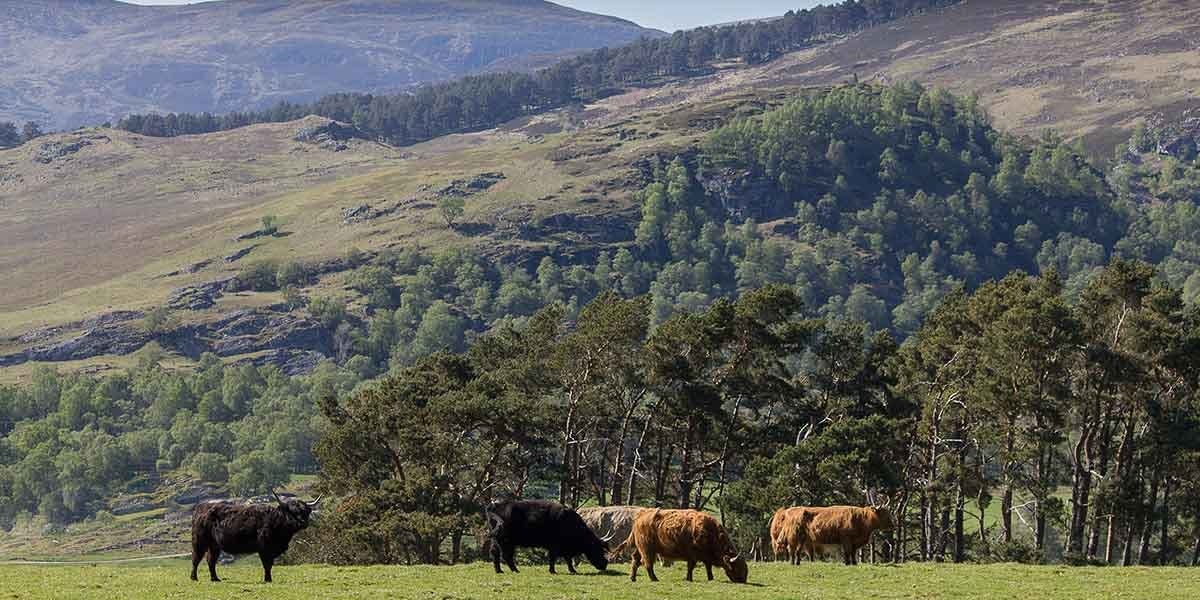
Don’t get 'hung up' (aah, we see what you did there!) on native breeds but do make sure it’s been ‘Dry-Aged’ – for at least 21 but preferably 28 days.
This means the meat will have matured on the bone for a fuller flavour and should have developed an almost nutty aromatic smell and a dark rich coloured crust.
Ask your butcher for a ‘rib on the bone’, which means the rib-eye that you are used to is still attached to the bones it lies next to in the animal.
If you are feeding six hungry adults, ask for a ‘three-bone-rib’, four adults a ‘two-bone rib’ etc. A ‘one-bone-rib’ is just a rib-eye on the bone and is more like a big chop so if it’s just you and a special friend go for the ‘two-bone’ and look forward to delicious leftovers.
Preparation
You’re going to need a roasting tray that fits your rib, but most importantly, fits in your oven.
Also some plain flour, Coleman’s mustard powder, tin foil, salt and pepper and a little olive oil.
Leave the meat out of the fridge at room temperature for a couple of hours before cooking, so it has warmed to an even temperature all the way through.
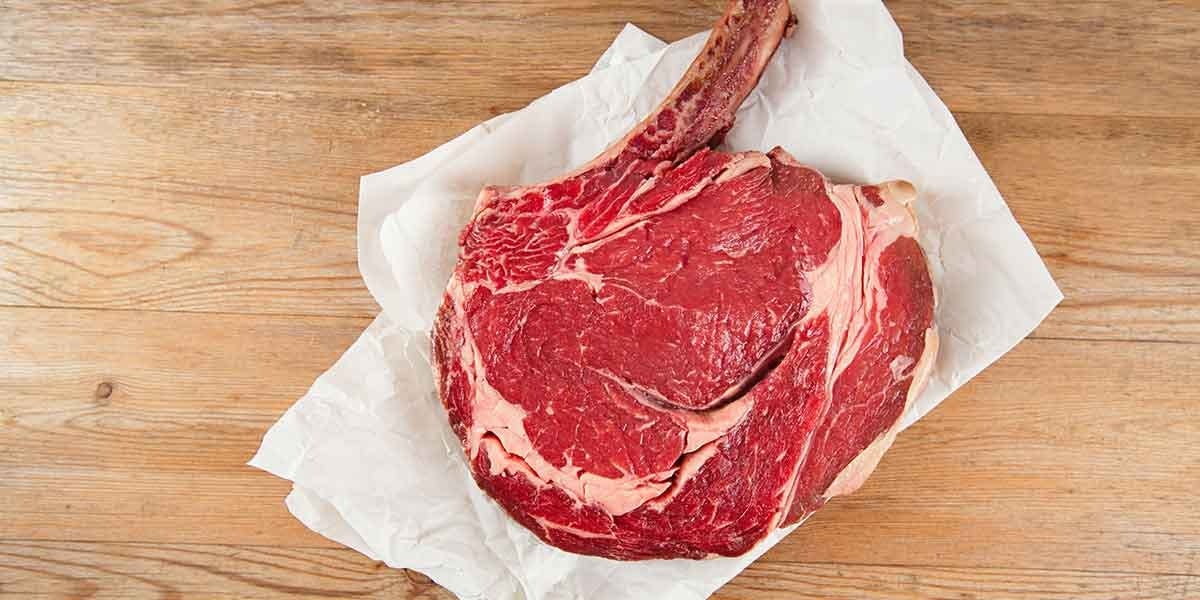
Take the olive oil and just rub it all over the meat – giving it a little massage and ensuring it covers all of the joint.
Season the beef with a little salt and some ground black pepper.
You'll notice that one side of the rib has a covering of fat – this is excellent but we are going to cover it in a mixture of flour and mustard powder.
First sieve about 50g of plain flour into a bowl and then about 20g of mustard powder into the same bowl and combine by hand.
Very lightly coat the fat with olive oil so it’s slightly sticky and then add the flour/mustard powder mixture patting it firmly so it sticks on giving a good covering.
Cooking temperatures
These temperatures assume you have a fan (convection) oven. If not, please add 20c to all the temperatures that follow.
Pre-heat to 220c, and put the tray in with a small knob of goose/duck fat so that it melts and lubricates the bottom.
After about five minutes, take the tray out, set the rib in, meat side down, fat side up and leave to roast for 20 minutes.
This is doing the same task as sealing it manually in a frying pan and will keep the meat nice and juicy in the middle.
After that, turn the oven down to 170c and continue to cook for a further 15 minutes for every lb weight for a rare joint.
Add 15 minutes for medium rare, and another 15 for medium.
There isn’t much need for anything beyond that as the ends will always cook further and satisfy anyone who prefers well cooked beef.
If you have a meat thermometer (a few pounds from most big supermarkets) then do use it but remember the core temperature of the meat will continue to rise by about 7c even once removed from the oven and 'resting'
Out of oven:
48c – rested 55c = rare
55c – rested 62c = medium rare
60c – rested 67c = medium
Resting
I used to worry about serving roasts quickly so they were hot and I would get stressed if the family weren’t sat down. None of that is relevant though.
A good roast can be served anywhere from 15 minutes up to an hour after cooking and still be a perfect temperature.
You should definitely leave the meat at least 15 minutes so it can contract after the cooking process and expel any juices on to the resting board for use in the gravy later on. Keep it covered with tin foil during this process so the meat doesn’t dry out or lose all its heat.
Carving
The first thing to do is to remove the meat from the bones. Take your carving knife and simply slice between the meat and bones. You will be left with a delicious roast rib-eye joint and some bones that can be scraped for any remaining traces of meat and then used to garnish the serving platter (and ultimately be fed to the dog).
Set your carving board onto a slightly damp dish cloth on the counter so it doesn’t move around, secure the meat with a carving (or dinner) fork and grab your carving knife.
Please make sure the knife is sharp so you’re safe and it doesn’t ‘butcher’ your lunch – think surgeon not savage for this part of the process.
Firstly, remove the delicious mustard crusted fat and slice into fingers that guests can help themselves to.
Next, with a smooth but firm back and forward motion, slice the meat starting from one end.
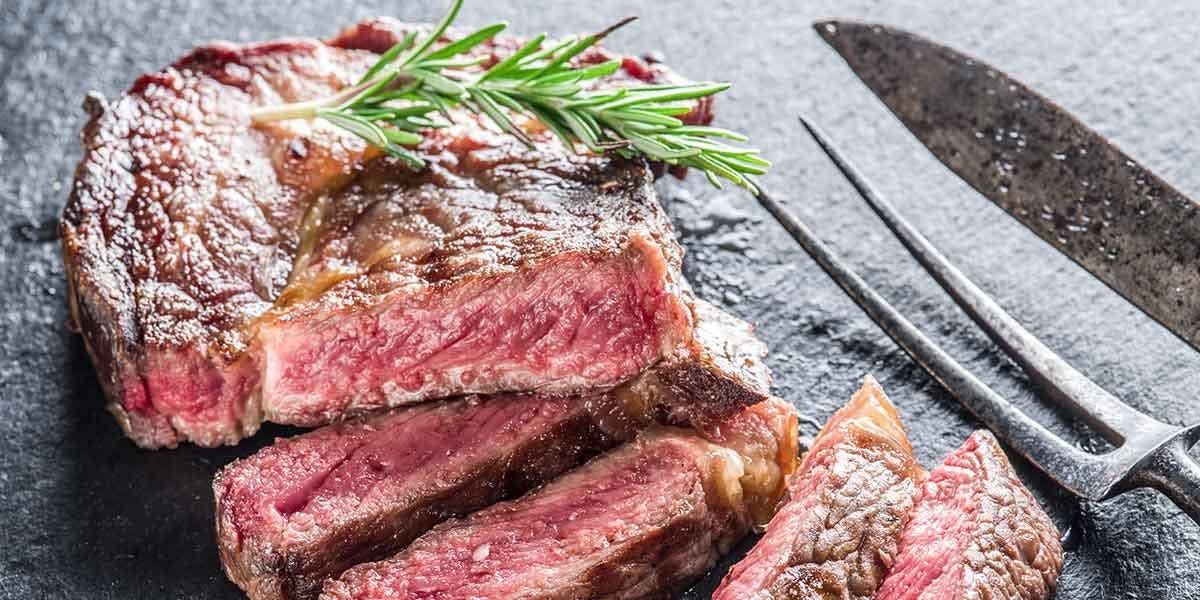
I try and keep my slices on the thin side, there will be plenty for everyone and the meat looks so much more elegant.
You will come to a point where the last part of the meat is now too small to easily carve in the same direction so I think it’s perfectly acceptable to put it down on it’s face and slice it in the perpendicular direction as if it’s a new small mini-roast – but do try and keep the slices thin and neat as before.
Arrange everything on a large platter, garnish with the bones, fat fingers and and scraped meat from between the ribs – I crush a little Maldon Sea Salt over everything as well.
Serve with Gravy, Creamed Horseradish, English Mustard, Roast Potatoes (duck fat has more flavour than goose fat), Champagne Steamed Savoy Cabbage and Yorkshire Pudding.
Bon Appetit as we say in Chelsea!

Three Course Dining Experience with Sides and Cocktail for Two at Marco Pierre White's London Steakhouse Co
Discover unforgettable dining at a Marco Pierre White's restaurant in London. You and a lucky friend or partner will be welcomed into London Steakhouse Co., for a delicious three-course meal with a side and cocktail each.
Find out more


